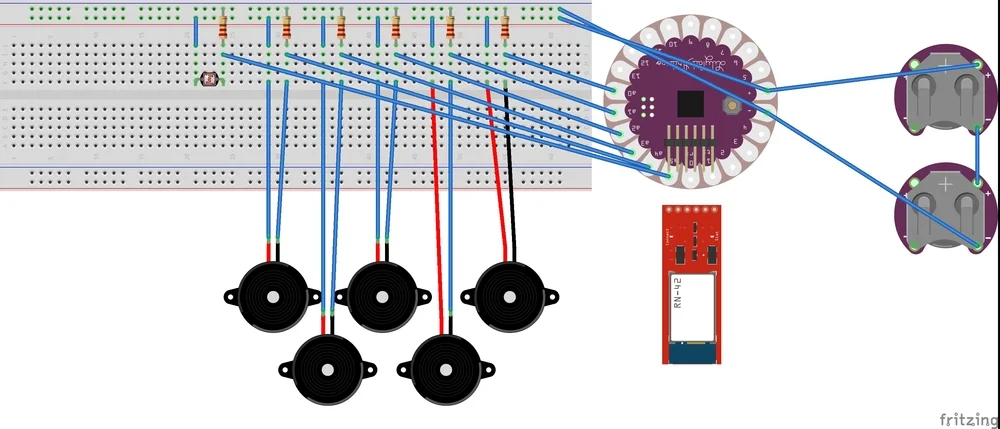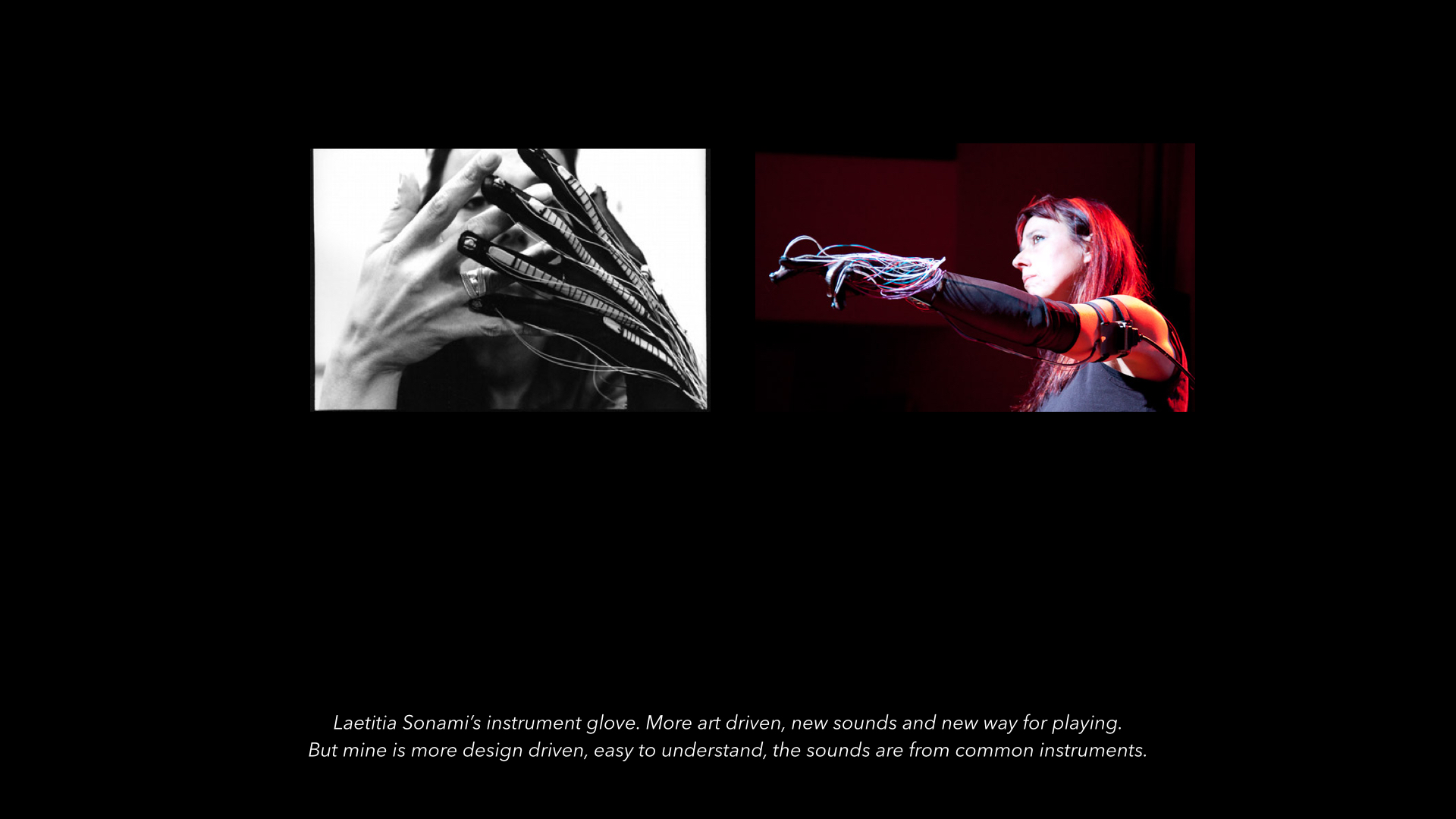After enclosing this glove, the cover interferes some connections in the circuit. It delays sounds a bit. Here is a video which documents making sounds by tapping fingers.
For the future, MACHINE WILL ADAPT TO HUMAN, INSTEAD HUMAN ADAPTING TO MACHINE.
Although we try to make our products more user centric and easy to use, users still have to learn how to use them. Can products learn users' behaviors by technology, so as to allow users to use these products intuitively? For exploring this design philosophy, I created a MIDI glove combining my hobbit.
DESIGN CHALLENGE
How to make an instrument that can adapt to humans' natural behaviors for playing sounds.
PERSONAS
Amateurs for any instruments.
SOLUTION
Making different sounds by tapping different fingers is a intuitive way for playing sounds. Besides, fingers are agile enough for creating complicated music. Keyboard instruments is adapting to that behavior. However, can I design an even easier way? When tapping on keyboard, we need to remember the locations of different sounds. For that, we have to practice for a while before playing intuitively on keyboards. How to skip that part? How to play without remembering different locations? I also got some inspirations from tap dance that tapping on any where for creating beats.
My solution is designing different sounds on our fingertips, so we don't need to find them on keyboards anymore.
PROPOSAL
There is only one glove for the left hand, only 5 fingers. But as tapping on another color surface, it can give another 5 pitches.
VISUAL DESIGN
When considering technology, sometimes it reminds us pollution, poison, metal box, cold blood... I wanted to choose some material which could let users forget negative images. Finally natural material came out from my mind. Moss is something standing for life and great natural environment. I wanted to disappear users' worries by using this material.
TECHNOLOGY
I use piezo sensors to detect tapping. When piezo sensors get the signals, they can send them to Lilypad (an Arduino). Lilypad can send signals to GarageBand through a MIDI Serial software for generating sounds. The code for Arduino can be downloaded here,
https://github.com/pekingkc/MajorStudio/tree/master/final_gloveAddPhotocell
FINAL LOOK
DOCUMENTATION
http://www.dkaib.com/new-blog-avenue/2015/6/18/documentation-for-musicgardenmidiglove
SHOWCASE ON BEHANCE
https://www.behance.net/gallery/22252093/Music-Garden-A-MIDI-Glove
POSSIBLE ITERATIONS
But when I finished and played, I found although it was easier to generate sounds than keyboard, it was hard to create music, as creating needed inspiration and coincidence (I believed). I could hardly break the music patten I had done, as I had gotten used to the sequence of tapping fingers. I just wondered whether I could design some instruments which were not only easy to use, but also could provide inspirations. So I designed another instrument. As the natural way for playing music was not that helpful by the MIDI glove, I wanted to use an ironic way to design the new instrument. What is the life resource of a garden or plant? That’s light. So I want to use this “natural” way for playing. You can check this piece here,
http://www.dkaib.com/#/55839b3ce4b0a7f245ebc1ca/
FINAL DELIVERIES
Slides for presentation, finalMIDIGlove
Paper for this project, finalPaper
The Circuit,
The Code,
https://github.com/pekingkc/MajorStudio/tree/master/final_gloveAddPhotocell
PROCESS
Inspiration
Precedents
WHY NAME IT AS "MUSIC GARDEN"?
I wish I can find a garden or some place with nature, just sitting their, playing some chill music, wasting my time without feeling guilty.












